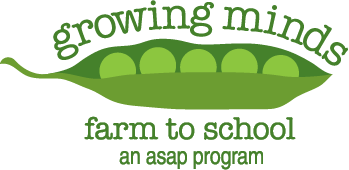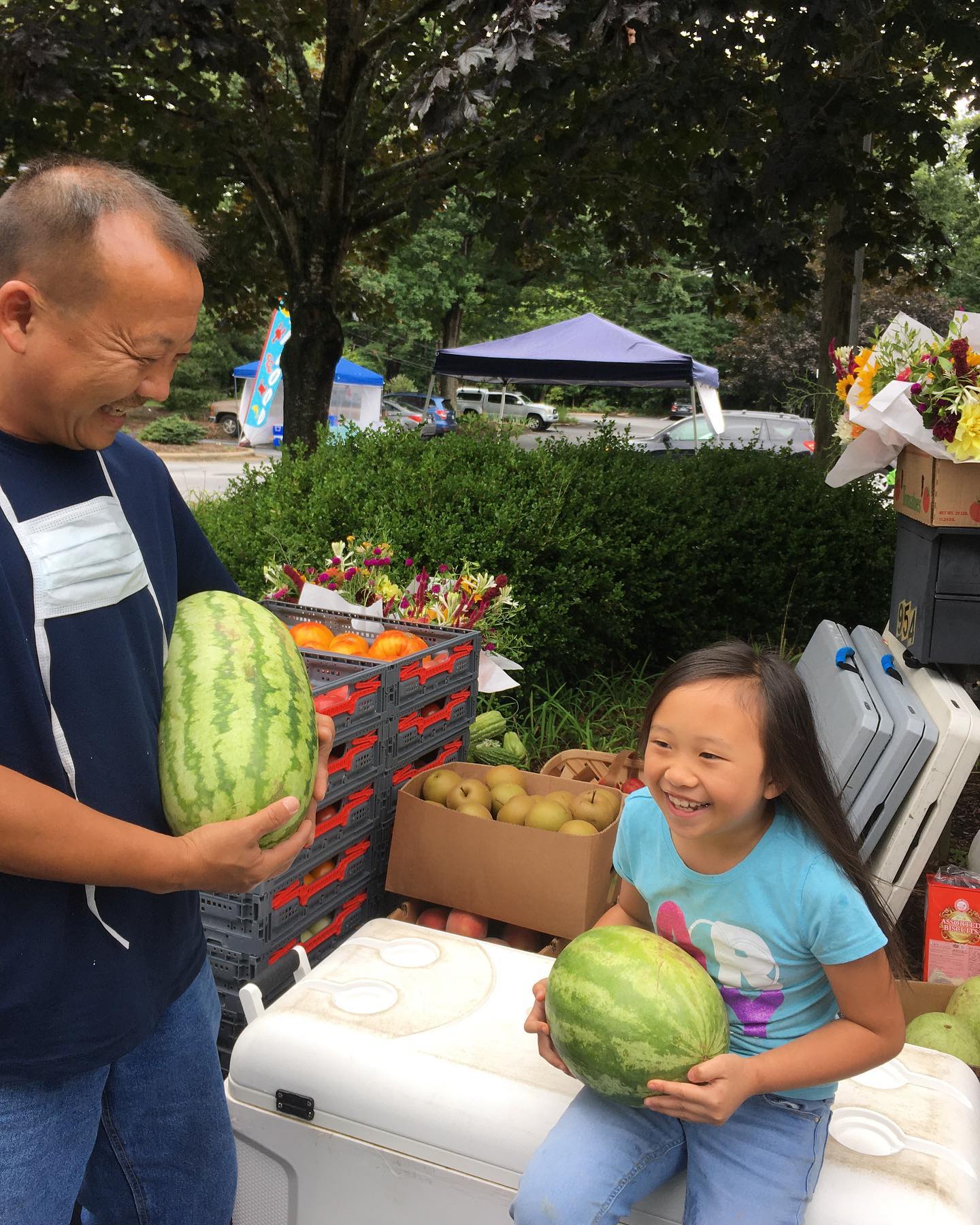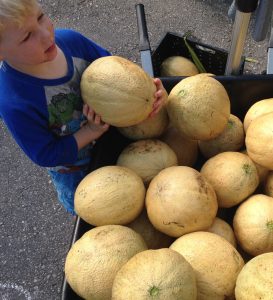This week’s theme is farmers markets. Our “Growing Minds Day by Day” educational resource lists are designed for families and educators.
Books:
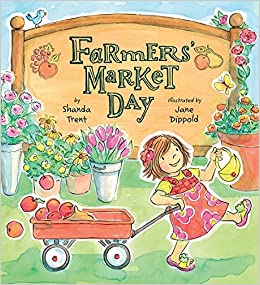 Farmers Market Day by Shanda Trent
Farmers Market Day by Shanda Trent
September is prime farmers market season! Help your kids gear-up for a trip to the farmers market by watching a read-aloud of Farmer’s Market Day. This short rhyming story follows an enthusiastic little girl as she searches the farmers market for the perfect treat. She’ll discover forests of broccoli trees and rainbows of flowers and taste freshly baked breads and pies. But will she find her prize? Farmers’ Market Day captures a colorful feast for the senses!
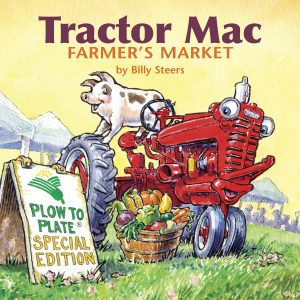 Tractor Mac Farmers’ Market by Billy Steers
Tractor Mac Farmers’ Market by Billy Steers
Pete and Paul the pigs love food, especially snacks and sweets. But Tractor Mac knows there is a better way to eat, and that it can even be fun, too: buying food from the farmers’ market! So Tractor Mac and friends visit the local farmers’ market, pick out a variety of fresh fruits and vegetables, and cook up a big, healthy feast. Watch a read aloud on YouTube. This book is recommended for children ages 2-5.
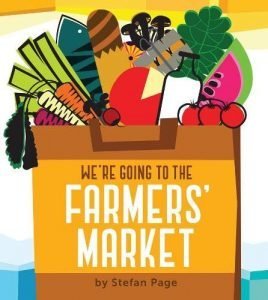 We’re Going to the Farmers Market by Stefan Page
We’re Going to the Farmers Market by Stefan Page
In this short story for ages 0-2, readers get to visit local farmers, fill baskets with fresh fruits and vegetables, and then head home to cook a feast, all with goodies from the farmers’ market! Watch a read aloud on YouTube.
Find more books
Visit the Growing Minds’ farm to school literature database to discover more of our favorite children’s books about farms. Type “diversity” into the search bar to find books that feature characters from underrepresented racial and ethnic groups.
Local Food Recipe:
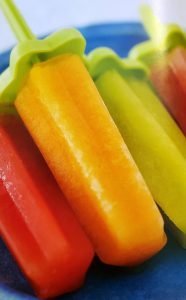 This week, celebrate the fruits of late summer by making this healthy, refreshing snack featured in the cookbook At the Farmers Market with Kids by Leslie Jonath and Ethel Brennan (this book can be checked out of our lending library). Making these homemade popsicles can earn children a square on our printable Kids Cooking Bingo card.
This week, celebrate the fruits of late summer by making this healthy, refreshing snack featured in the cookbook At the Farmers Market with Kids by Leslie Jonath and Ethel Brennan (this book can be checked out of our lending library). Making these homemade popsicles can earn children a square on our printable Kids Cooking Bingo card.
Melon Medley Paletas
Makes about 12 paletas
“Paletas are traditional Mexican ice pops, usually made from pureed summer fruits. Melons are especially good for pops because they are naturally high in water and sugar. This recipe calls for watermelon, cantaloupe, and honeydew, but you can experiment with the types of melon available at your market. If you don’t have molds, you can use large ice-cube trays or paper cups with wooden sticks. The yield is approximate and depends on the size of your melons and your molds.”
Kids can… scoop the seeds from the melons, remove the melon flesh with an ice cream scoop, place the melon in the blender and make the puree, and help fill the molds.
Ingredients:
- 1 small seedless watermelon
- 1 small cantaloupe
- 1 small honeydew melon
Directions:
- Cut each melon in half. With a spoon, scoop out the seeds from the cantaloupe and honeydew. Then scoop out the flesh from all the melons with an ice cream scoop. Or you can cut the flesh from the rind with a knife, then cut it into chunks.
- Have ready 12 ice-pop molds. You may want to have more on hand in case you end up with extra puree.
- Put the watermelon in a blender and process until smooth. Fill one-third of the molds with the puree. Rinse out the blender and repeat with the cantaloupe and then with the honeydew. The puree can be a bit chunky.
- Place the molds in the freezer. If you are using nontraditional molds, such as ice-cube trays or paper cups, you will need to freeze the puree until it is partially frozen, usually about 2 hours, then insert a stick into each mold and return the molds to the freezer.
- Freeze the paletas for at least 8 hours or up to 24 hours. They will keep in the freezer for 1 week.
Educational Resources:
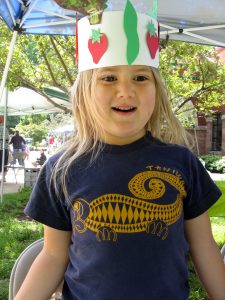
- Veggie Crowns Lesson Plan: Children gain knowledge and interest in new fruits and vegetables through making vegetable crowns, and learn to identify new fruits and vegetables.
- Fruit and Veggie Spinners Lesson Plan: Children learn to identify new fruits and vegetables, and associate vegetables and fruits with a positive experience making a fun art project.
- Growing Minds @ Market manual: Our manual is full of local food and farm based children’s activities perfect for the tailgate market setting and community events and settings of all kinds. In addition to helpful tips on launching a GM@M program, the manual includes local food-based crafts, tasting and cooking activities, and scavenger hunts.
- ASAP Farmers Market Tour Guide: This guide will help you introduce people to your farmers market, share best practices in shopping, and help shoppers to feel comfortable at the market so that they can become regulars. Whether you are a market employee or volunteer, local organization, or a community group, you will find useful tips and tools to organize and lead a successful market tour.
- From the Field to the Farmers Market Video: Travel with Mason as he shows what it’s like to be a part of a farm family and bring produce to the St. Paul Farmers Market in Minnesota. (Source: Minnesota Department of Agriculture)
Activities:
Farmers Market Scavenger Hunt
Visit the farmers market with your family or school and see how many of the following things you can find there. If you can’t visit a market in person right now, you can watch a video to take a virtual “tour” of a farmers market. Check out these videos at the Hendersonville and Transylvania Farmers Markets in Western North Carolina. Download a printable scavenger hunt handout here.
- A food or fiber that came from an animal

- A vegetable whose leaves we eat
- A vegetable whose roots we eat
- A fruit
- A baked good or pastry
- A farmer
- A plant that is still growing
- Honey or maple syrup
- Food stored in a jar or bottle
Find additional Farmers Market Scavenger Hunts in our Growing Minds @ Market manual (pages 43-45).
Explore the Farmers Market:
Exploring the Farmers Market Virtually: Asheville City Market South
Take a trip around a Western North Carolina farmers market and learn why purchasing seasonal fruits and vegetables is beneficial for you and your community. Then learn the ins and outs of setting up a seasonal cooking demo at your local farmers market. This video was filmed at the Asheville City Market South.
Visit a local farmers market
You can purchase fresh produce, eggs, dairy, meat, plant starts, and more at your local farmers market. Many markets in our Appalachian Grown region accept SNAP/EBT, and several markets in the Asheville area are now offering Double SNAP benefits. Find out how SNAP at markets works here. To find an Appalachian Grown farmers market near you, visit: asapconnections.org/find-local-food/farmers-markets.
—
That’s it for this week. Check back next week for new resources. Click here to access Day by Day resources from past weeks. If you didn’t find what you’re looking for here, please visit our Lesson Plans page.
